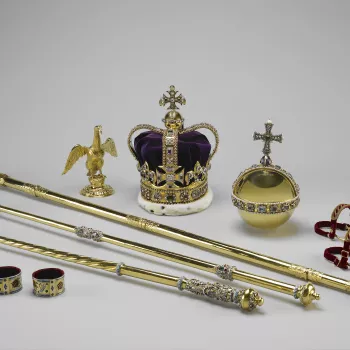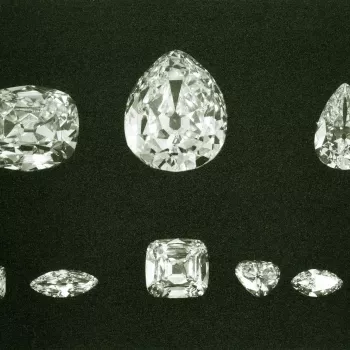The Crown Jewels
The Crown Jewels are the most complete collection of royal regalia in the world

The Crown Jewels are the most famous of the nation's treasures. Kept under the watchful eye of the Yeoman Warders at the Tower of London, they constitute the most complete collection of royal regalia in the world. Their long history, spanning almost a thousand years, and their continued ceremonial use in the Coronation Service and at the State Opening of Parliament make them one of the richest expressions of sovereign magnificence.
The Crown Jewels are made up of a host of extraordinary items – from orbs, sceptres and crowns, to gold and silver-gilt banqueting and altar plate. All are intimately connected with the status and role of the monarch. The oldest of these is the twelfth-century spoon used for the sovereign's ritual anointing at the coronation.
Most of the remarkable pieces were made for Charles II's coronation in 1661, and later added to at definitive moments during the history of the monarchy. Fashioned from precious materials, they incorporate some of the world's most famous gemstones, including the Koh-i-nûr and Cullinan diamonds.
Click on a section below to find out more.












